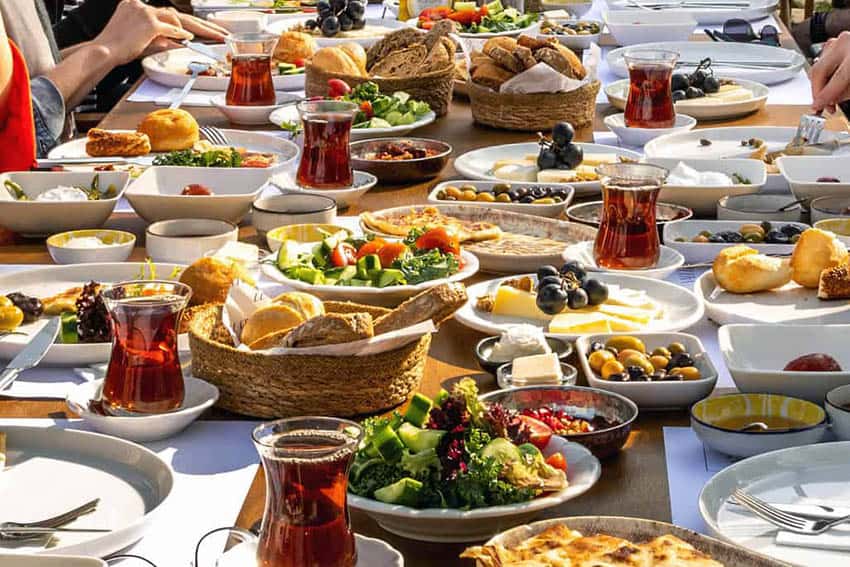
Cambridge and England: 75 Years Since the D-day Invasion
By Julie Hatfield
It was the assault that changed the world.
The biggest of all, D-Day: June 6, 1944, seventy-five years ago.

Operation Overlord, it was called, launched from the shores of England. And just about every city and town in England is marking the anniversary this year with tours and celebrations and special offers to visitors to help them remember all of the preparations that took place before D-Day to get ready for the monstrous battle.
Visitors from All Over
Visitors are coming from all over the world, even from Germany, says Ian Rutherford, operator of Travel England Tours, a historian of World War II history who provides details from his readings and background that bring the 75th anniversary to life for his tourists.
“There’s one German man who has returned every year since 1944,” he notes, “to remember where he was captured.”
Rutherford starts most of his tours in England, with boat trips to the French coast and road trips further into the interior of France where so many battles took place after the initial attack.
Before D-Day, the German bombings hit all over the English coast as well as London, and many British citizens still remember those times.
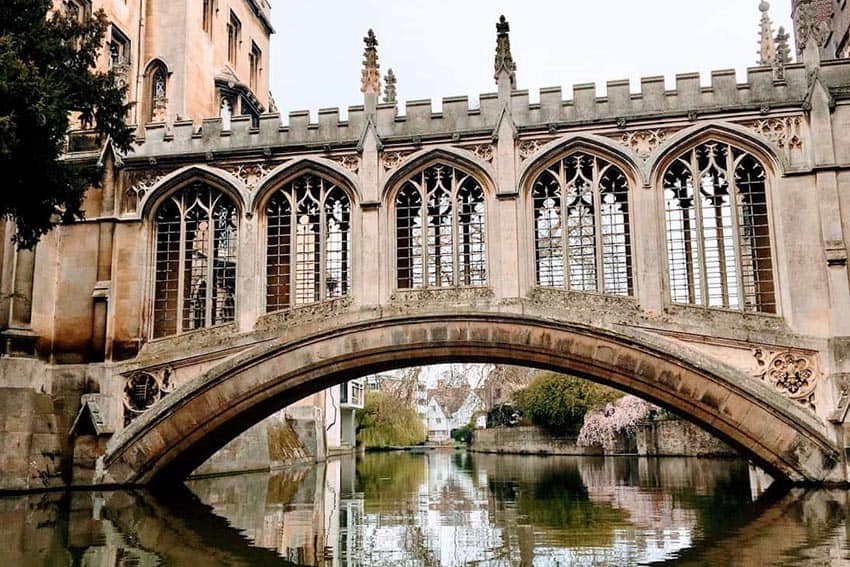
Gas Mask Memories
If they don’t personally recall the constant planes flying overhead, the gas masks given out, the fires, the buildings crushed, then they’ve heard about it from their parents and grandparents.
Special 75th D-Day tours throughout England are available by US-UK Connections, a tourism project funded by the government and managed by Destination Plymouth to showcase cultural and historical connections between the UK and the US.
My husband and I began our particular tour in Cambridge, 64 miles north of London, a beautiful city where famous students such as Sir Isaac Newton and Charles Darwin were educated.
Another famous Cambridge University student was a young man named John Harvard, who founded a certain college in another Cambridge across the ocean.
England’s Cambridge is also home to the only Second World War American military cemetery and memorial in the UK, where 3,812 US personnel lie at rest and the Wall of the Missing is inscribed with the names of 5,127 American soldiers lost during the air campaigns over northwest Europe and the buildup to D-Day. It’s definitely worth a visit.
Winston’s Siren Suit
Even today, WWII is always present. In the recently refurbished University Arms Hotel (www.universityarms.com), a large photograph of Winston Churchill wearing a “siren suit” hangs above the concierge desk. The siren suit was a one-piece outfit popularized during World War II by the prime minister as a convenient garment to throw on quickly when seeking shelter from bombings. The staff of University Arms, where we stayed, wears uniforms inspired by that siren suit.
The hotel, a beautiful Edwardian building, has a long history. Its guest rooms overlook Parker’s Piece, the park where locals claim the rules of football (soccer) were first developed in the 19th Century.

It’s also the place where Queen Victoria invited 15,000 guests to dinner to celebrate her coronation in 1838. The University Arms memorializes Cambridge notables in its guest rooms: we stayed in the enormous Stephen Hawking Suite.
You can walk from the hotel to most of the Cambridge University colleges, including Pembroke, which has a direct connection to the United States in its campus church.
Here is where Godfrey Washington, great uncle to the first president of the United States, is buried. A wall plaque displays the red-and-white-striped Washington family crest, which inspired Betsy Ross to create the first American flag.
Nearby stands a famous pub frequented by American and British airmen during the Battle of Britain. The Eagle Pub, also called the RAF Bar, continues to serve meals and warm British beer to American guests, descendants of those airmen who long ago burned their names and squadron numbers – still visible in the ceiling — with cigarette lighters and candles.
An American tourist who recently visited The Eagle for the first time was moved to tears when he found his late father’s name memorialized with his signature on the ceiling of the pub.
Watson and Frick
The Eagle Pub has another claim to fame: James Watson and Francis Crick, two Cambridge sons who dined regularly at the Eagle, walked into the bar on February 28, 1953, to announce that “we have discovered the secret of life.” They were referring to the experiments they made in understanding the human genome by finding the double helix structure of DNA.
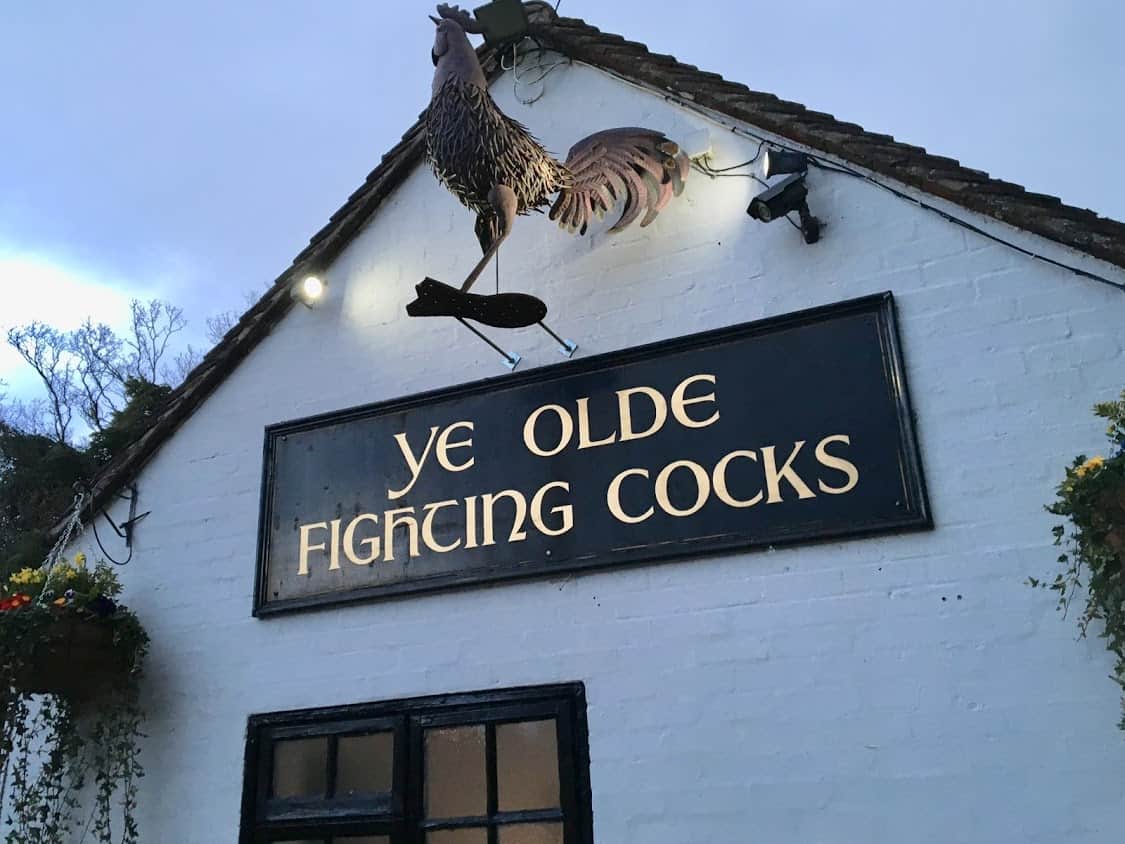
One of the best ways to see the beauty of Cambridge’s historic buildings and landscapes is to take a punting tour on the River Cam which slowly glides past Kings College Chapel, among other landmarks, the church with the largest complete collection of stained glass windows in the world.
A guide told us that all the windows were removed for protection from German bombs in 1940 and lovingly put back place after the war.
Canterbury and St. Albans Attractions
A ride in one of Britain’s sleek high-speed trains took us from Cambridge to the town of St. Albans, named for Britain’s first Christian martyr, a Roman citizen who refused to give up Christianity and was killed for his faith.
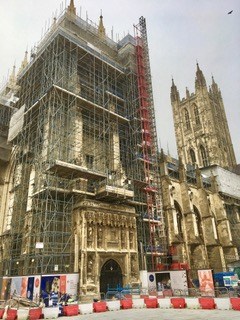
St. Albans Cathedral, situated over the place where Albans is buried, has had a fascinating history of architecture, faith, and art.
It is the oldest site of continuous Christian worship in Britain and is as vital and contemporary as any modern church.
Behind the altar stands a group of colorful statues representing modern martyrs, including Dietrich Bonhoeffer, the pastor who was executed by the Nazis for his work as a German dissident.
The history is ancient in St. Albans; you can walk from the cathedral to the oldest pub in Britain, called Ye Olde Fighting Cocks, opened in 793 A.D., a favorite of political leader Oliver Cromwell.
While visiting St. Albans, how could I resist taking the 20-minute drive to the spectacular “Hatfield House,” which had its 400th birthday in 2011.
Hatfield House
As far as I know none of my relatives are living there (nor did they 400 years ago), but lots of Americans are familiar with its splendid interior, having seen it displayed in such award-winning film productions as “The Favourite,” “The Crown,” and “The King’s English,” among others.
The inside of Hatfield House is medieval. The outside, however, is cutting edge, so to speak. Head Gardener Andrew Turvey is happily using 21st Century technology to mow the estate’s 600 acres of grass. He has a herd of 11 computerized robots to do the job.
Another quick train ride took us from St. Albans to Canterbury, home of yet another historic architectural masterpiece. The glorious Cathedral of the Archbishop of Canterbury, a UNESCO World Heritage Site, came close to being totally destroyed by Adolf Hitler in 1942.
Hitler’s Guidebook
Infuriated by the RAF’s bombing of German cities, Hitler reportedly looked through a guidebook to find English buildings of special historical value.
Canterbury Cathedral led the list, and in June of 1942, the cathedral was bombed. Fortunately, the Nazi bombardiers were not especially accurate. They dropped one large bomb on the north side of the cathedral and a second on the south side, but the main building was unscathed.
Today, visitors can take a variety of tours, including a demonstration from one of its 27 stonemasons who ply their old craft to keep the ancient building in good condition.
To best enjoy this magnificent site, you should spend the night right on the grounds — at the unique Canterbury Cathedral Lodge , which feels like a modern monastery with great views of the structure from every room, and shares the cathedral’s beautiful gardens. Breakfast is taken in the Rectory.
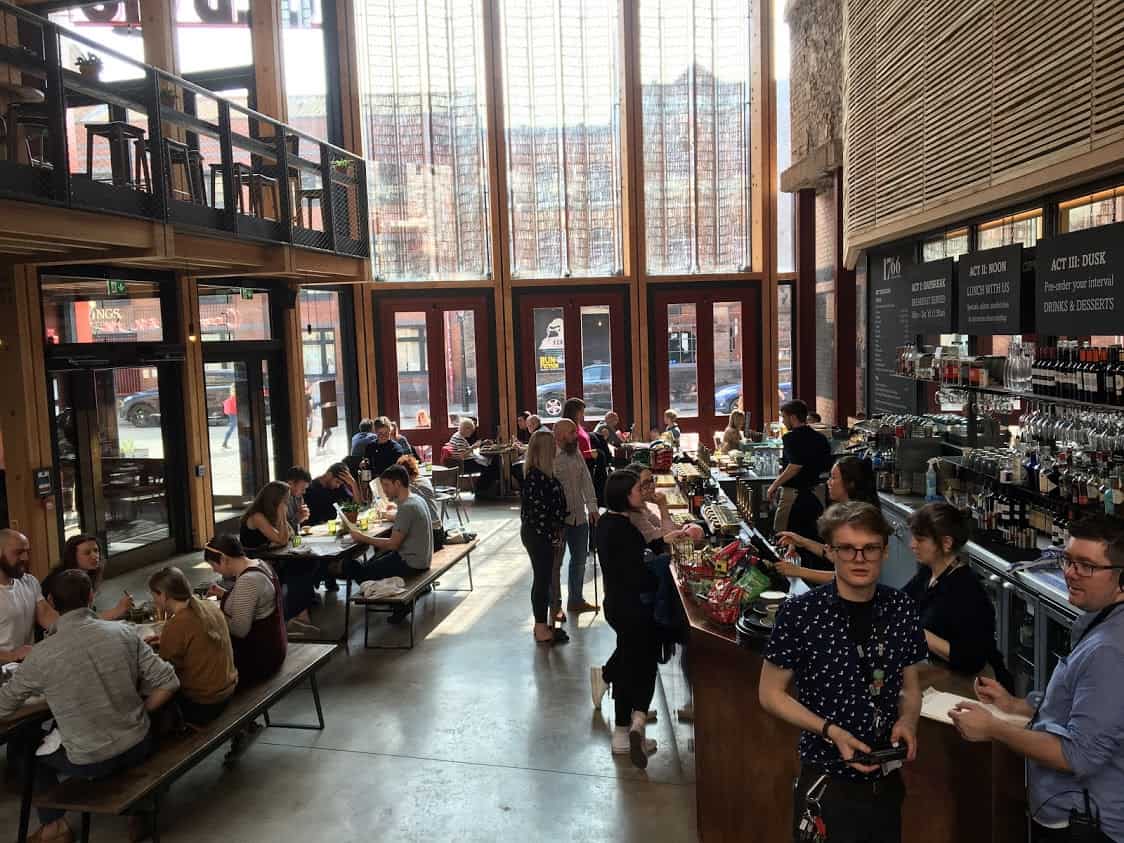
Find the Gate, Ring the Bell
If you are a lodge guest out exploring the town, relishing your own personal Canterbury tales until after 9 p.m., you are instructed to find the ancient gate to the cathedral property, ring a bell situated next to the gate, and wait for a guard to let you in for the night.
The cathedral is not Canterbury’s only attraction. Canterbury Historic River Tours took us on an interesting boat ride down the River Stour, passing under the historic King’s Bridge, built in 1134, which shows shrapnel scars from World War II bombs.
Another one-hour train ride brings you to the city of Bristol, one of England’s busiest ports in 1940, which earned it an extra-heavy bombing from the Nazis.
“Hitler bombed the best bits of Bristol,” noted Derek Robinson, 87, an author of a dozen novels on World War II and a native of the city. “As a little boy, I can remember the planes going back and forth overhead during the Battle of Britain and being given gas masks early on.
Lucky for us, we developed radar, which was invaluable. The RAF could see enemy aircraft getting into formation across the Channel, which allowed us to meet them in the air when they arrived.”
Clifton College in Bristol was headquarters of the US army in Britain, where Operation Overlord and the D-Day invasion plans were secretly prepared.
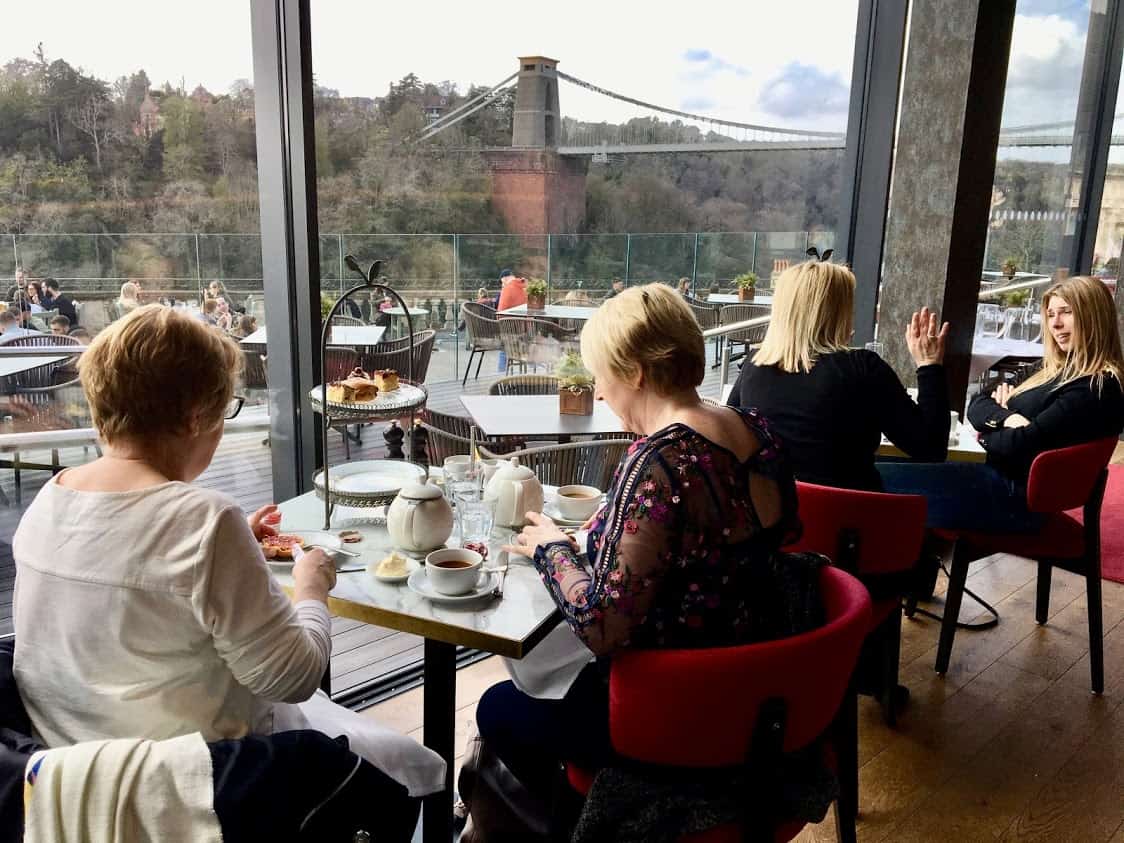
We stayed at the recently renovated Avon Gorge Hotel, which features an all-glass restaurant overlooking the gorge and its dramatic suspension bridge. Appropriately the hotel, which is part of the Hotel du Vin chain, offers 59 choices of wine to go along with its delicious fare.

Don’t miss lunching at the newly refurbished 1766 Bar and Kitchen of the Old Vic, the oldest continuously running theater in the English-speaking world.
Bristol is not only known for its live theater, but it was also designated a “City of Film” by UNESCO in 2017. The Old Vic Theatre School was a training ground for film actors Olivia Colman and Sir Daniel Day-Lewis, among others.
If you’re driving back to London from Bristol, two stops are worth making: Take a stroll through beautiful Berkeley Castle in nearby Gloucestershire.
It is almost 900 years old, still lived in today by the Berkeley family — the 27th generation. It is more savage than cozy, seeming to be made out of an enormous rock. King Edward II was imprisoned and murdered here in 1327.
Aldbourne
The second stop would be in the town of Aldbourne, an unspoiled village of thatched-roof houses that was home to men of America’s famous 101st Airborne Division before and after the D-Day invasion.
The fertile fields around Aldbourne provided a practice landing zone for the U.S. paratroopers, including those in one particular company that later starred in the book and television series, “Band of Brothers.”
A plaque honoring the “Screaming Eagles” company has been placed on the front wall of The Blue Boar, the town pub where officers gathered for a pint (or two) after hours.
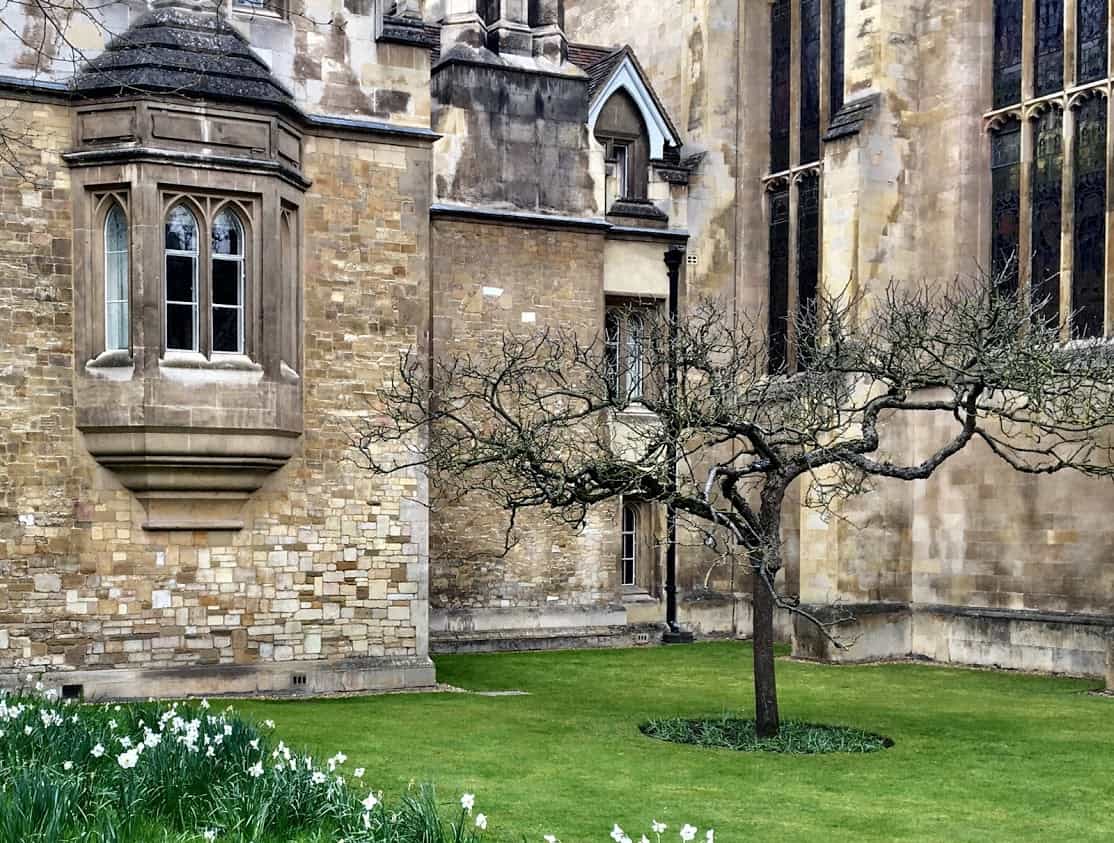
D-Day and World War II in England
There’s hardly a place in all of England where you won’t find a reminder of World War II and the D-Day Invasion if you’re looking for history. But along with the war stories are also fascinating peacetime places to see and things to do in this vibrant country.

And as long as you’re already in England, Plymouth is a pleasant 120-mile drive south from Bristol, and you can add onto your D-Day remembrances here, where more than 36,000 US soldiers embarked from April to June 1944.
Oh yes, and keep in mind that Plymouth had one other famous embarkation. That is the one when – 399 years ago – the merchant ship Mayflower left port and began its historic voyage to a new world.
In 2020, it will mark the 400th anniversary of this voyage. And don’t think for a moment that England won’t be marking that event with a huge blowout.
Mayflower 400 (www.mayflower400uk.org) is already gearing up for an international celebration that will do for the Mayflower milestone what US-UK Connections is doing for the 75th anniversary of the D-Day Invasion.
 Julie Hatfield, a Boston Globe staff writer for 22 years, now freelances for Hemispheres Magazine, Travel World International Magazine, the Globe, luxegetaways.com and AllThingsCruise.com, among others. She is a member of SATW and was awarded a Gold Prize by the North American Travel Journalists Association for her story on helicopter-fishing in British Columbia. She recently published “Thirty Years on Two Wheels, a Biking Odyssey.”
Julie Hatfield, a Boston Globe staff writer for 22 years, now freelances for Hemispheres Magazine, Travel World International Magazine, the Globe, luxegetaways.com and AllThingsCruise.com, among others. She is a member of SATW and was awarded a Gold Prize by the North American Travel Journalists Association for her story on helicopter-fishing in British Columbia. She recently published “Thirty Years on Two Wheels, a Biking Odyssey.”
- These 9 U.S. National Parks Require Reservations in 2024 - April 17, 2024
- Take a Hike in Olympic National Park - April 17, 2024
- The Wild Mississippi: 2340 Miles Across Ten States - April 8, 2024


